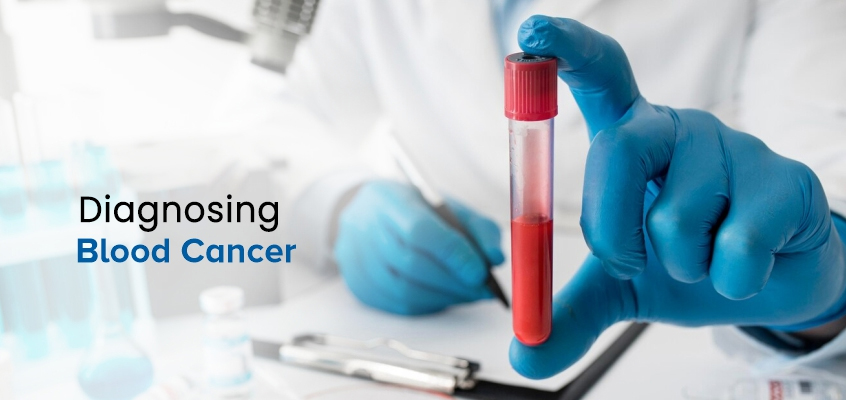By: Dr Silky Jain | Updated: Sep 13, 2023

Precise diagnosis of blood cancer in children involves a series of steps to first confirm blood cancer, then identify its type and then the risk-stratification. It requires close collaboration between pediatricians, hematologists-oncologists, pathologists, and other specialists. The diagnostic process typically includes the following steps:
Medical History and Physical Examination: The initial step involves taking a detailed medical history of the child, including any symptoms they may be experiencing. Child may present with easy fatigue and paleness of skin due to reduction in hemoglobin, or there may be unexplained persistent fever. Some cases may have bleeding symptoms due to low platelet count, like skin bleeding presents with spontaneous bruising or fine red rash. Persistent bone pains, is also a common symptom of childhood leukemia. The doctor will conduct a thorough physical examination to check for signs of illness, such as swollen lymph nodes or an enlarged liver or spleen.
Blood Tests: Blood tests are essential to evaluate the number and appearance of different types of blood cells. Abnormalities in the blood cell counts or appearance may provide clues to the presence of blood cancer. Most important blood test is Complete blood count (CBC) with a good peripheral smear. Since leukemia is cancer of white blood cells, CBC generally shows increase in WBCs and reduction in hemoglobin and platelet count. Peripheral smear (slide with a drop of blood spread on it) is examined under the microscope by the hemato-pathologist to recognize blood cancer cells called ‘blasts’ which look different from the normal cells. The ability to clinch the diagnosis on peripheral smear depends on the expertise of hemato-pathologist.
Bone Marrow Aspiration and Biopsy: A bone marrow aspiration and biopsy are crucial for confirming the diagnosis of blood cancer. This involves extracting a small amount of bone marrow and a tiny piece of bone from the hipbone. A hemato-pathologist then examines the bone marrow sample under a microscope to look for abnormal cells and determine the type of blood cancer. This test is done under sedation in case of children, on day-care basis, and is not associated with any long-term side-effects.
Flow Cytometry: Flow cytometry is a specialized test that analyzes the characteristics of individual cells., based on cell surface markers. It helps in confirming the type of blood cancer (ALL vs AML).
Cytogenetic and Molecular Testing: Additional testing is recommended in all cases of leukemia on the bone marrow sample to analyze and identify the genetic abnormalities. Molecular testing may also be conducted to detect specific gene mutations. This is of utmost importance in guiding treatment decisions in the present era, because genetic mutations driving the blood cancer, can help in risk-stratification of the tumour into low-risk or high-risk, which helps decide the intensity of treatment.
Lumbar Puncture (Spinal Tap): This is an important part of investigation. A lumbar puncture is done at the baseline to examine the cerebrospinal fluid (CSF) for the presence of cancer cells. This is more important for ALL, as it has more propensity to spread to central nervous sytem compared to AML.
© Copyright 2024 Dr Silky Jain
Design & Developed By Ezbiz technologies pvt ltd